
(Engelmann & J. M. Bigelow) Britton & Rose, Smithsonian Miscellaneous Collections 50: 535, 1908
Lectotype (O. missouriensis trichophora); Herbarium; Herbarium; Herbarium; Herbarium; Herbarium; Herbarium; Drawing (The Botany of the Expedition, 1856, plate XV No. 1-4 [O. missouriensis trichophora])
Opuntia trichophora is possibly related to O. arenaria
O. trichophora is related to O. diploursina
O. trichophora is related to O. polyacantha
Original Citation
What is Opuntia trichophora?
Opuntia trichophora is a prickly pear cactus that has been treated as a variety of O. polyacantha. Herein we treat it as a stand-alone species of prickly pear because of its unique differences from O. polyacantha.
Details
From Powell and Weedin:
The pads of this Opuntia are variously shaped: broadly ovate, orbiculate, obovate to narrowly obovate and flat. The pads are often 7-13 cm long and 5.5-11 cm in diameter and about 1 cm thick, but smaller pads occur. The areoles are close together: 0.6-1.3 cm apart. Spines are present in almost all of the areoles. The areoles on this prickly pear are closely spaced with about a dozen slender spines (6-17). The longest spines may be hairlike and 4-8 cm long. The other spines are 1-3 cm long and are often appressed. The longer spines are typically pale.
Flowers of this Opuntia are yellow, 4-7 cm long and 4-5 cm wide, but smaller flowers may be produced. The filaments are often pale or barely green-tinted to cream-colored or even pale yellow. The style is cream to pinkish and about 2 cm long and only slightly bulbous at the base. The 8 stigma lobes are 3 mm long and dark green. The slender pericarpel has spiny or hairy areoles. The fruits are dry and smallish, very spiny at maturity. The fruits are obconic or nearly so and 1.9 to 2.5 cm long with many areoles. The umbilicus may be up to 8 mm deep. There are few (8-10) large seeds per fruit, irregularly discoid, 6-6.8 mm in maximum diameter, 1.5-2 mm thick, with a beaked margin 1-2 mm wide.
O. trichophora is diploid.
Other Notes
O. trichophora is similar in overall appearance to O. diploursina. Both may have spines that are very slender and flexible, forming long hairs and areoles that are close together. Some plants may not have long hair-like spines and can have a wooly appearance with many short spines.
Some individuals may have slender spines longer than 14 cm. Sometimes the hair-like spines are located only on the underside of the plant, are few in number, and are early deciduous. Occasionally plants have no discernible long hairs. The smallish pads are frequently obscured by the presence of many spines.
O. trichophora often grows on hot rocky slopes or cliff faces in mountainous or otherwise dissected terrain, but it can grow on gypsum soils or even sandy soils in grasslands or pinon-juniper woodlands. Some populations grow in baking hot conditions (e.g., on south- or southwest-facing sunny basalt cliffs). O. trichophora grows above 3000 ft and often grows at 5000-7000 ft. It has been anecdotally reported at 9000 ft.
This Opuntia occurs throughout much of Colorado Plateau and north into Wyoming along Flaming Gorge. It may be observed east of the central mountains of Utah, on the western side of Colorado, in northern Arizona, in most of New Mexico west of the Great Plains, in trans-Pecos Texas, and Chihuahua, Mexico.

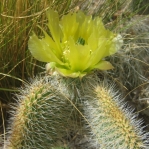
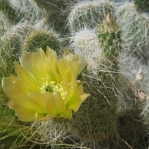
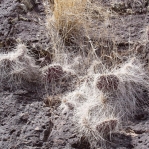
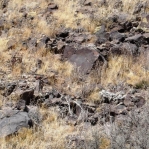
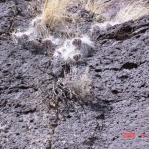
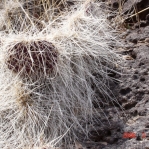
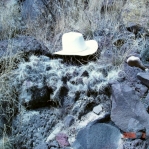
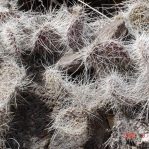
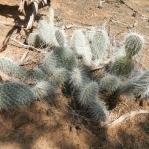
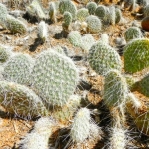
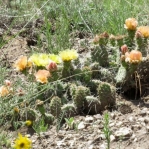
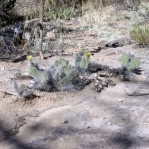
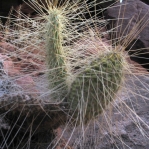
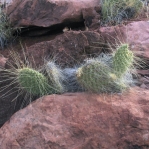
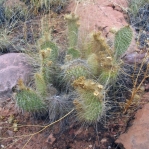
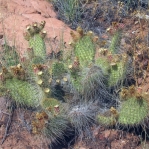
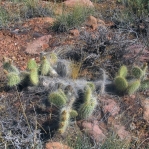
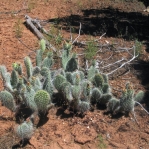
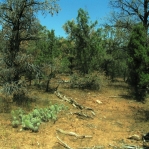
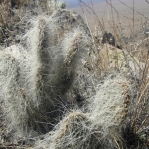
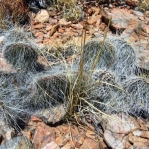
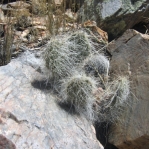
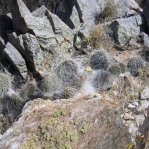
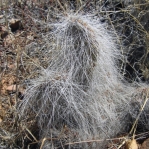
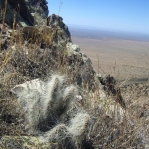
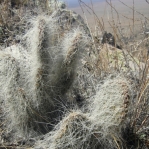
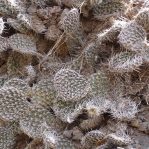
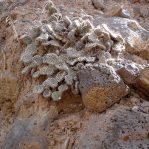
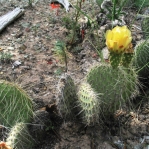
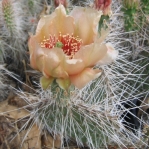
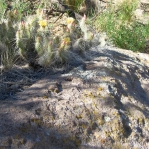
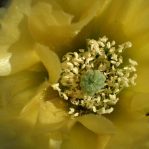
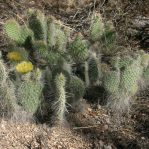
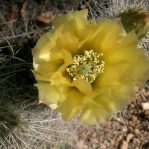
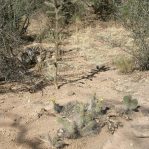
Joe,
I think you have missed to describe the most differentiated observable trait between polyacantha and trichophora.
On O. trichophora new segment mainly starts from main stem and later on older segments while on polyacantha new segments mainly starts from older segments and rarely from main stem. This trait is suppressed when you grow plants from a cutting though
Mats,
Thank you for the clarification.
Joe Shaw